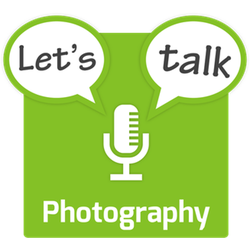Panel
- Bart Busschots (host) – @bbusschots – Flickr
In this solo show Bart shares his thoughts on the slow-motion end of the SLR era. Triggered by recent reporting that Nikon has stopped DSLR development, and that Canon is doing the same, Bart explains why he’s not concerned about the future of ‘big boy cameras’ (to paraphrase friend of the show Allison Sheridan).
While this podcast is free for you to enjoy, it’s not free for Bart to create. Please consider supporting the show by becoming a patron on Patreon.
Reminder – you can submit questions for future Q & A shows at http://lets-talk.ie/photoq
It appears both Nikon and Canon are moving away from DSLRs in favour of mirrorless cameras. Neither have released any new models recently — the newest offering from Nikon is the D6 from 2020, and the newest from Canon are the EOS–1D Mark III & EOS 850D, also from 2020.
According to credible reporting from Nikkei, Nikon have stopped developing new DSLR products, though they will keep producing, selling, and supporting their current product line, at least for now.
Nikon responded to the reporting with a statement that doesn’t actually contradict the reporting at all:
“There was a media article regarding Nikon’s withdrawal of SLR development. This media article is only speculation and Nikon has made no announcement in this regards. Nikon is continuing the production, sales and service of digital SLR. Nikon appreciate your continuous support.”
This really is the end of an era — SLRs have been the king of the photographic hill for decades, and now they’re on the way out.
From a purely nostalgic POV this does make me sad — I cut my photographic teeth on an Olympus OM–1 film SLR, and I rediscovered my love of photography with a series of two Nikon DSLRs (D40 & D5100). But that’s not really important — what matters if what this means for the art and craft of photography in general. Is the end of the SLR era going to harm photography? Thankfully, I really don’t think it is, because we have a better design already in the ascendency.
What was so Good About SLRs?
To understand why their demise is not a problem, we need to think about what the original 35mm film SLRs and their later digital cousins brought to the table.
SLR stands for Single Lens Reflex — that means that there’s a movable mirror mounded between the lens and the focus plane (where the film or sensor sit). The prism is hinged on the top, and flips from 45 degrees to horizontal when the shutter is open. In its resting position it sits at 45 degrees so it bounces the light straight up, where it hits a prism that redirects it by 90 degrees back to horizontal and reverses the flipping effect of the mirror, and then it goes to the eyepiece you use to frame and focus your shots. When you press the shutter the mirror flips up so it’s flat against the bottom of the prism and the light can hit the film or sensor behind. This is why an SLR makes that click-clunk noise when you fire off a shot — the lighter click is the mirror flipping up, and the bigger clunk it is flipping back down.
What advantages does this elaborate design provide? It means that what you see is what you get — when you look through the viewfinder you are looking through the actual lens that will cast light on the film or sensor, so you are seeing exactly what you’ll be photographing, and, because of the prism, you’re seeing it the right way around. If that doesn’t sound exciting, remember that until then, photographers had to pick just one of those two attribute! Range finders showed you the scene the right way up in the viewfinder, but the viewfinder was a totally separate lens off to the side of the main lens, so there were parallax effects. Meanwhile large and medium format cameras showed the photographer the view through the same lens that will hit the film plane, but the view was flipped in at least one direction.
SLR cameras have also always had standard (to the manufacturer) lens mounts, so interchangeable lenses have always been a major feature of SLRs.
Finally, while it may be hard to believe now, the 35mm format SLRs are synonymous with now was very small and portable compared to the large and medium format cameras ‘real’ photographers used at the time.
So, in summary — the SLR have three key features:
- What you see is what you get
- Interchangeable lenses
- Small and light weight
Mirrorless is the New SLR!
What are Nikon and Canon reportedly switching their focus to? Mirrorless cameras. What are their key features?
Firstly, they use a digital view finder that shows you a preview right from the actual sensor that will record the actual
Image — so what you see is what you get!
Secondly, they have interchangeable lenses. In fact, if you go micro-four-thirds they have even more interchangeable lenses than SLRs did, with one cross-brand standard!
Thirdly, they’re smaller and lighter.
In other words, mirrorless cameras solve all the same problems SLRs did.
But Wait — There’s More!
Losing the complexity and indirection of the mirror and prism actually gives mirrorless cameras advantages over SLRs.
Firstly, not having the mirror really simplifies auto-focus. With a DSLR there are little holes in the mirror that let light into dedicated autofocus sensors, but mirrorless cameras can simply use the main sensor as the autofocus sensor. This removes the need for very careful alignment and makes autofocus more robust, and it enables cool AI-powered focusing modes.
Secondly, removing the mirror shortens the distance from the lenses to the sensor, so wide angle lenses can be significantly smaller and lighter.
And finally, because the sensor powers the viewfinder, you can have live previews while shooting long exposure shots.

